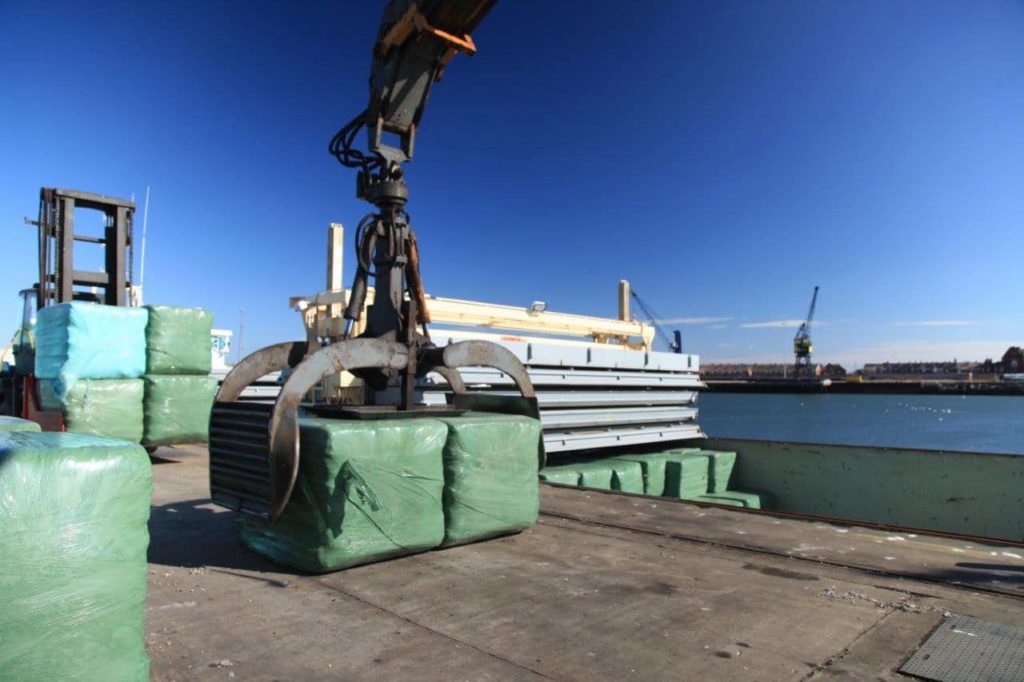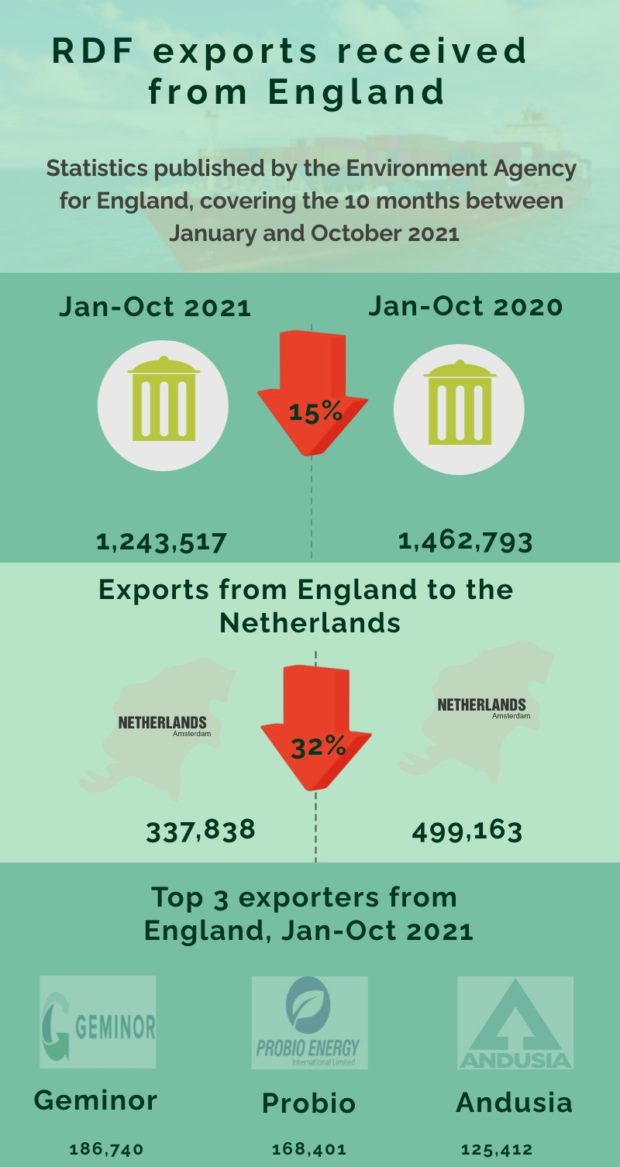Published on Friday (3 December), the provisional statistics are “broad approved exports” from England. While the final approved figures may be higher, the statistics do give an indication of the overall direction of exports.
They show that between January and October 2021, 1,243,517 tonnes were exported from England, down 15% from the same period in 2020.
This continues a steady decline of exports from England, which has been put down to a myriad of factors including the Covid-19 pandemic, import taxes and a rise in domestic energy from waste plants.
As outlined below, a contributing factor to the fall has been a drop in tonnage going to the Netherlands. A €32-per-tonne tax on the import of waste for incineration has been in place in the Netherlands since 1 January 2020.
Confidence
The last set of statistics for the first eight months of the year were published in October, and showed a 15.3% fall in exports.
RDF exporters however remain buoyant, and say there remains “strong demand” across the UK for exports (see letsrecycle.com story).
Some explained that in other countries in the UK, there remains lower EfW capacity and many rely on the export market to deal with residual waste.
Many other expressed confidence that waste volumes will also rise next year, meaning demand for RDF will follow.
Conference
This confidence was underlined at the recent RDF Conference, organised by letsrecycle.com.

Robert Corijin, chair of the RDF Industry group and marketing manager at Attero, gave provisional details of a study carried out by Prognos, a German consultancy company.
He explained that this highlighted that shipping RDF even 9,000 kilometres away would be more environmentally beneficial that sending it to landfill 150 kilometres away.
While he acknowledged the need for some landfill, he said with millions of tonnes still going to landfill across Europe, including the UK, there is still a need for RDF exports across the continent.










Subscribe for free